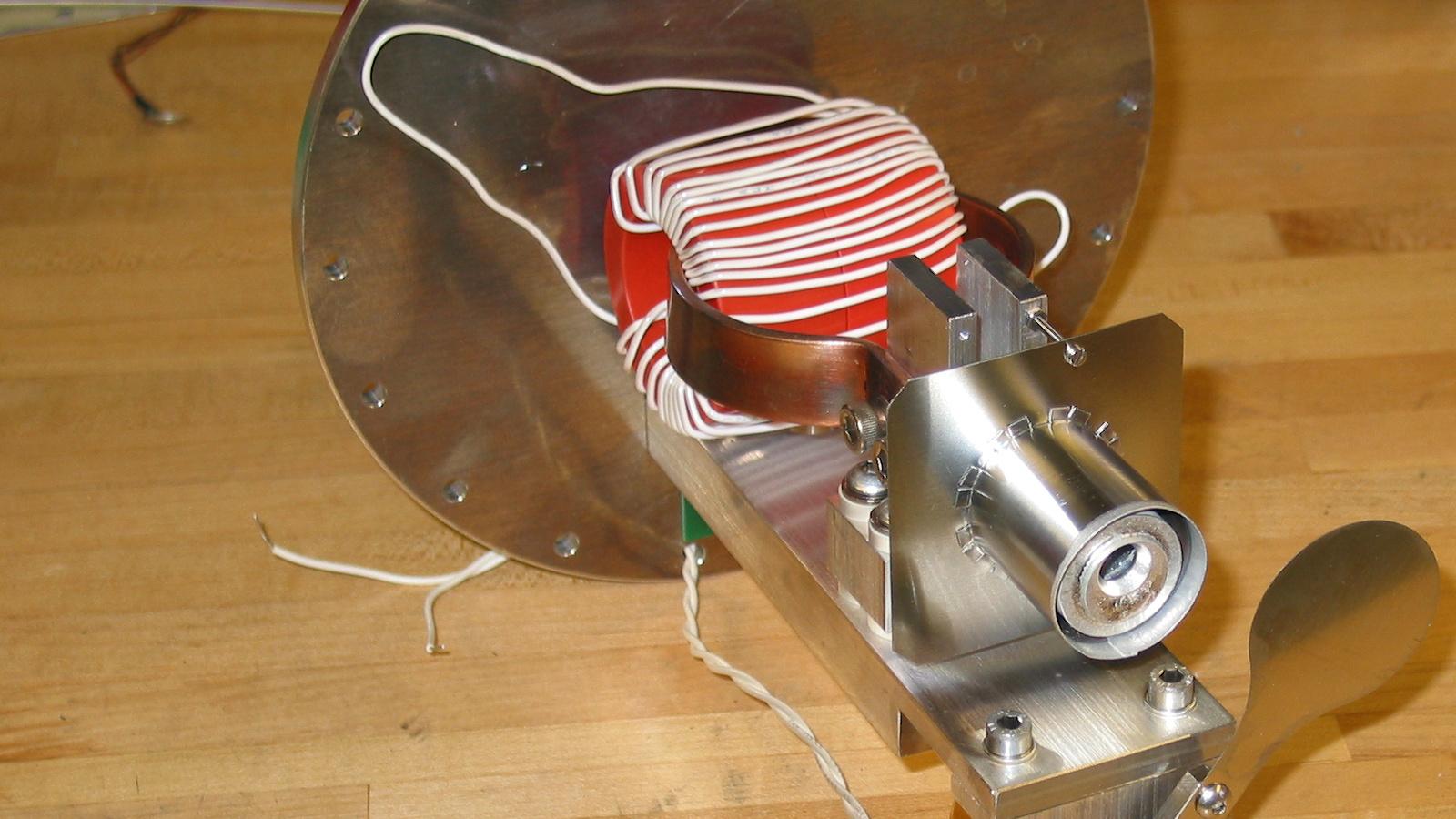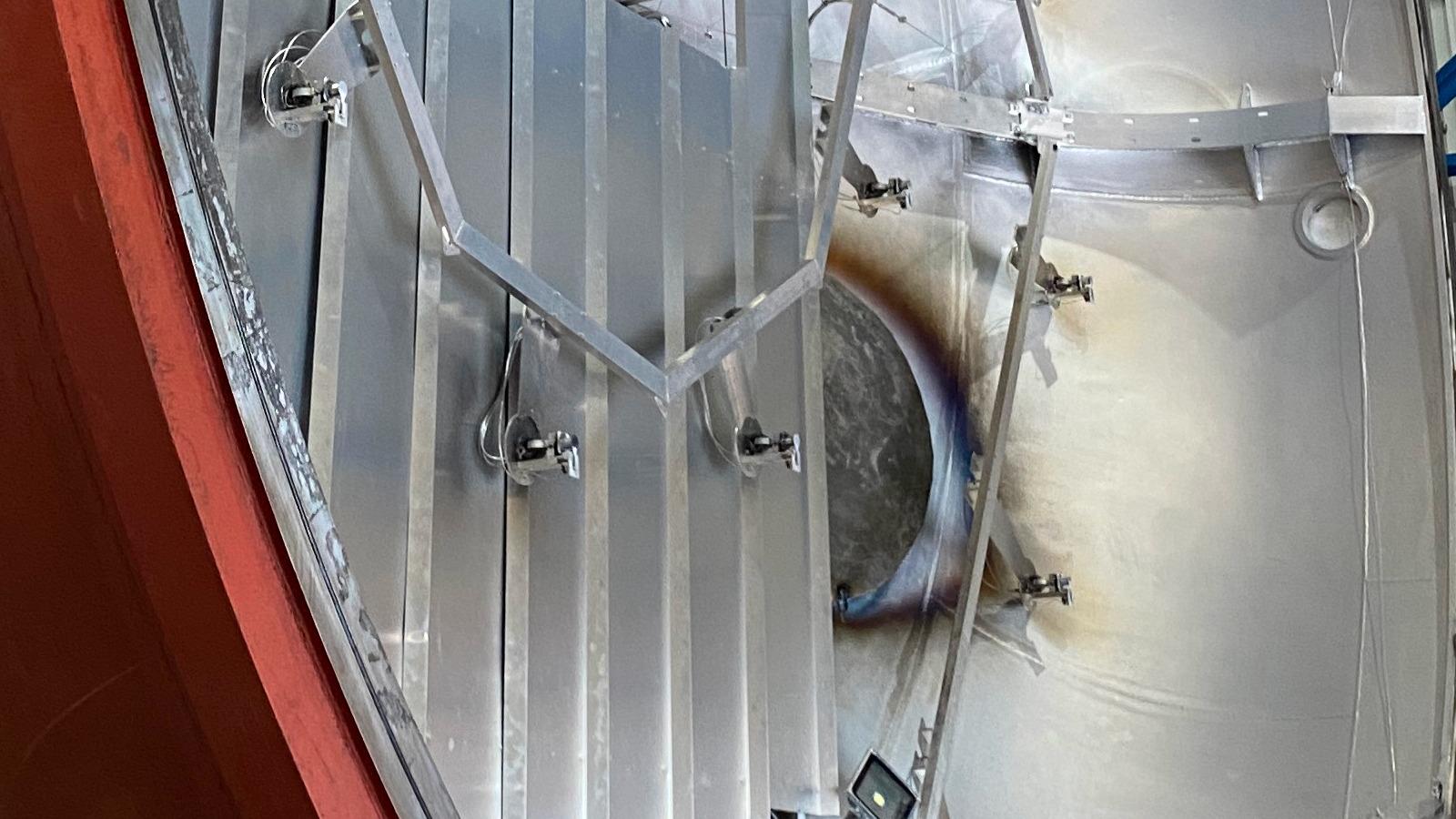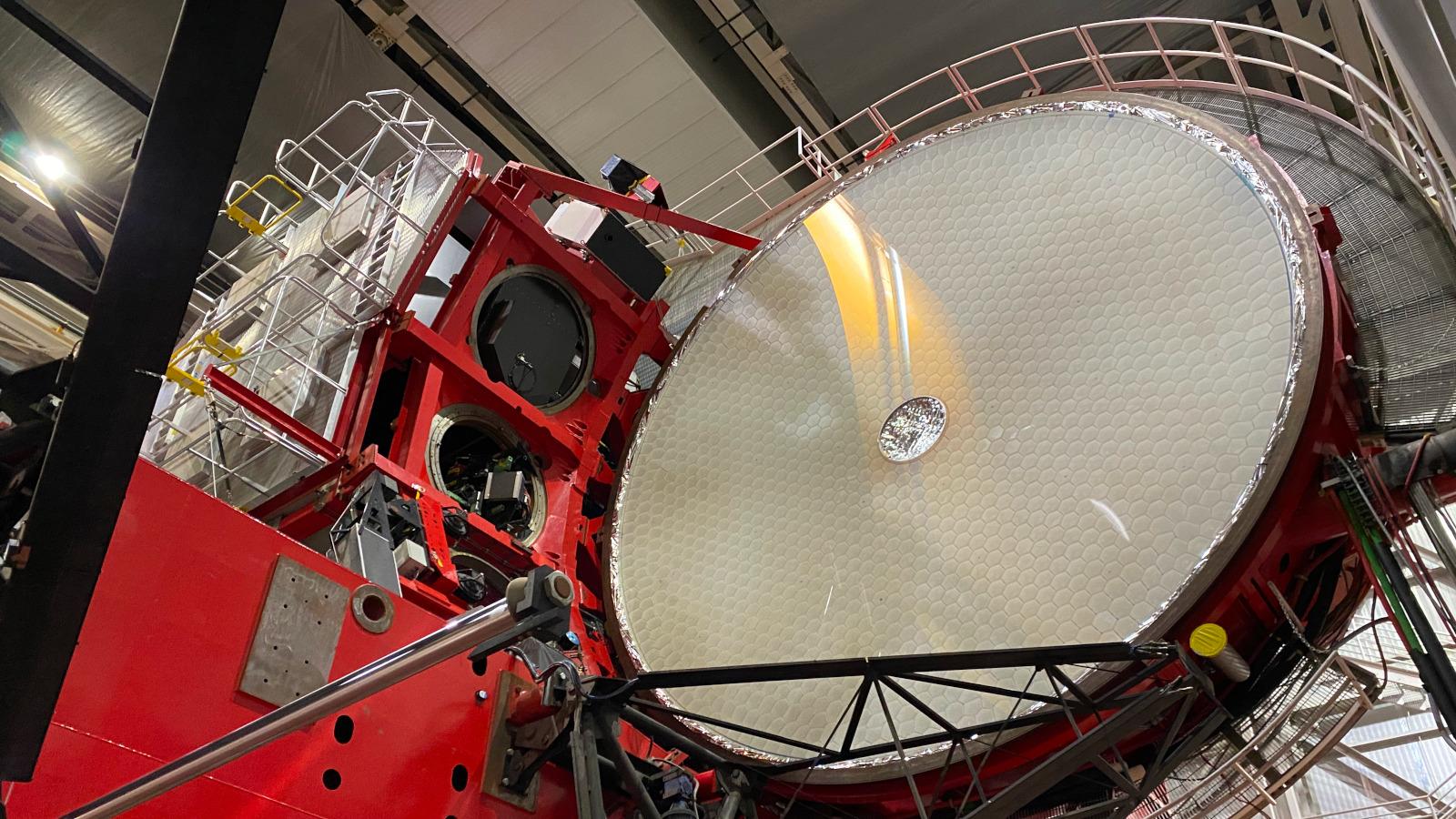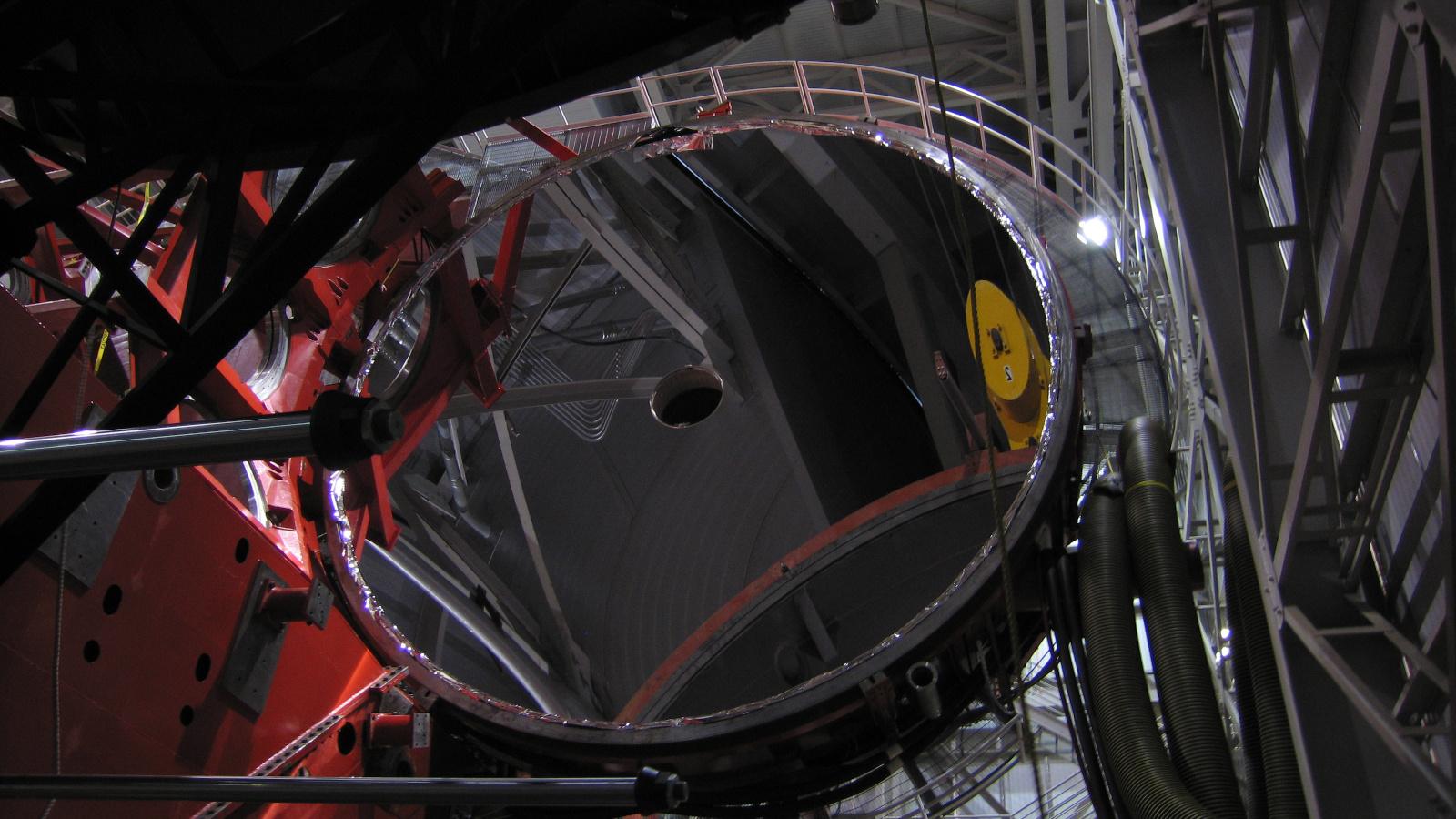LBT Primary Mirror Aluminization System
OSU designed and built the aluminization system that is used to deposit a thin coating of reflective aluminum on the concave front surface of the Large Binocular Telescope's 8.4-meter primary mirrors. To reduce the risk in handling the enormous spun-cast honeycomb glass primary mirrors, the LBT aluminizes the mirrors in-place on the telescope. The mirror cell that mounts the mirrors on the telescopes doubles as one half of a vacuum bell jar. The 9-m diameter bell jar lid contains all of aluminization components.
The LBT aluminization system has a variety of unique features: aluminizing the mirror in the telescope with the mirror horizon pointing; boron nitride crucibles for the aluminum sources; only 28 sources are used powered with 280 Volts at 20 kHz; high vacuum is produced with a LN2 cooled charcoal cryo-panel; an inflatable edge seal is used to isolate the rough vacuum behind the mirror from the high vacuum space; and a burst disk is mounted in thecenter hole to protect the mirror from overpressure.
The LBT has two 8.4-m diameter primary mirrors, each of which has been cleaned and recoated every other year using this system starting in 2005.
Instrument Specification
- Project type: Telescope subsystem - mirror aluminization
- Diameter: 9m (bell jar)
- Coating Material: aluminum
- Telescope: Large Binocular Telescope, AZ, USA
- Years active: 2005 - present
- Reference: Atwood et al. 2006, SPIE, 6273, 0T
Instrument Facts
- The bell jar and dummy mirror cell were shipped from Italy to Columbus including a barge trip up the Mississippi and Ohio Rivers to Portsmouth, Ohio, then trucked overnight to Columbus with a police escort on the freeway.
- Too large for on-campus facilities, the aluminizing system was integrated and tested in a rented airplane hangar at the former Rickenbacher Air Force Base south of Columbus, Ohio
- The aluminum crucibles are composed of barium nitride and use a novel embedded heater system so that the raw aluminum pellets never come into contact and react with the heater metal (a common coating "fail" in other systems).
- The aluminizing system has successfully recoated the LBT primary mirrors each time it has been used.
Instrument Team
Bruce Atwood (Project PI)
John Hill (LBT project lead)
Tom O'Brien (mechanical engineer)
Daniel Pappalardo (Electrical Engineer)
Ralph Belville (Design Engineer)
Jerry Mason (Software Systems Developers/Engineer)
Dave Brewer (Senior Instrument Maker)
Dave Steinbrecher (Senior Instrument Maker)
Ed Teiga (electronics technician)
Barry Sabol (NMIMT)
James Howard (LBTO)
Luca Miglietta (Arcetri)






